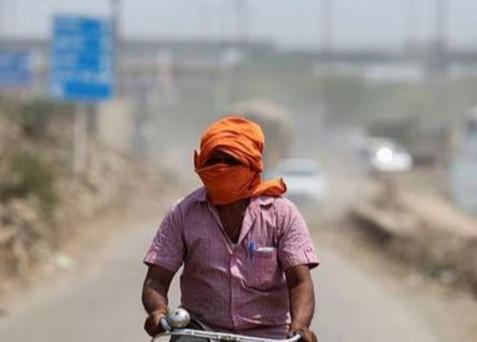
Extreme Heat Endangering Health & Productivity of Workers: Report
As the world continues to grapple with the challenges of climate change, a recent report by the World Health Organisation (WHO) and World Meteorological Organisation (WMO) has highlighted the alarming impact of extreme heat on worker health and productivity. According to the report, worker productivity drops by 2-3% for every degree above 20°C, with manual workers in agriculture, construction sectors, and vulnerable populations like children and the elderly in developing countries being particularly at risk.
The report, which was published on [date], emphasizes the severe health risks associated with extreme heat, including heatstroke, dehydration, and kidney dysfunction. These hazards not only affect individual workers but also have significant implications for businesses and economies worldwide.
Heat-Related Illnesses on the Rise
Heat-related illnesses are already a major concern globally, with over 600,000 deaths attributed to heat stress each year. The WHO estimates that by 2030, heat stress is expected to become the leading cause of mortality, surpassing even malaria and tuberculosis.
The report highlights the increased risk of heat-related illnesses among manual workers, who are often exposed to extreme heat while performing physically demanding tasks. Agriculture and construction workers, in particular, are vulnerable to heat stress due to their outdoor work environments and lack of access to cooling measures.
Economic Consequences of Heat-Related Illnesses
The economic consequences of heat-related illnesses are significant, with estimates suggesting that heat stress costs the global economy over $100 billion annually. The report emphasizes that heat-related illnesses not only affect individual workers but also have a ripple effect on businesses, industries, and entire economies.
In developing countries, where healthcare infrastructure and resources are limited, the impact of heat-related illnesses can be devastating. The report highlights the need for targeted interventions and public health measures to mitigate the effects of extreme heat on vulnerable populations.
Vulnerable Populations at Risk
The report identifies several vulnerable populations that are disproportionately affected by extreme heat, including:
- Children: Children are more susceptible to heat stress due to their smaller body size and reduced sweat production.
- Elderly: Older adults are more prone to heat-related illnesses due to age-related declines in physical function and reduced ability to regulate their body temperature.
- Manual workers: Manual workers, particularly in agriculture and construction, are at increased risk of heat stress due to their physical demands and lack of access to cooling measures.
- Developing countries: Developing countries often lack the resources and infrastructure to mitigate the effects of extreme heat, making their populations more vulnerable to heat-related illnesses.
Recommendations for Mitigation
The report offers several recommendations for mitigating the effects of extreme heat on worker health and productivity, including:
- Implement heat stress prevention programs in industries and workplaces.
- Provide access to cooling measures, such as air-conditioned workspaces and hydration facilities.
- Conduct regular heat stress risk assessments and monitoring.
- Develop heat-related illness prevention and treatment protocols.
- Promote public awareness and education campaigns to raise awareness about heat-related illnesses.
Conclusion
The report by the WHO and WMO highlights the urgent need for action to address the growing threat of extreme heat on worker health and productivity. As the world continues to grapple with the challenges of climate change, it is essential that we prioritize the health and well-being of workers, particularly those in vulnerable populations.
By implementing heat stress prevention programs, providing access to cooling measures, and promoting public awareness and education campaigns, we can reduce the impact of extreme heat on worker health and productivity, ultimately contributing to a safer and more productive global workforce.
Source:
https://repository.inshorts.com/articles/en/PTI/45d9bd2d-ff57-417c-9e5f-831344bb34b0






